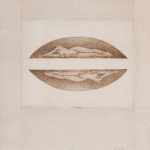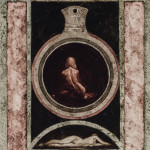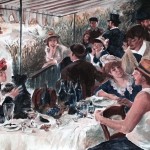Biography
Since he began painting in the early 1970s, Mark Tansey (b. 1949) has earned a reputation as a “painter-historian” who explores the outermost boundaries of reproduction and Postmodernism. In addition to his own detailed strokes, he juxtaposes images and words from magazines, books, and critical essays from multiple eras and movements to produce “pictorial rhetoric.” Like Richard Pettibone, Tansey surveys and reproduces his historical influences – Jasper Johns, Frank Stella, Marcel Duchamp – and shrouds them in playful alterations for the viewer to uncover. Tansey’s sphere of influence, however, is not only more literary, but also more extensive. Both of Tansey’s parents taught art history, and his mother was also an accomplished slide librarian who developed one of the first computerized slide archives. Tansey was exposed to the art history canon from an early age, which led him to classes at the San Francisco Art Institute and the museums in the Bay Area. Deciding to become a representational artist, Tansey studied under the painters Lorser Feitelson, Llyn Foulkes, and Larry Dreiband at the Art Center College of Design in Los Angeles from 1969-1972. It was here that he became interested in appropriation, laying the foundation for his representational works. With precision and detail similar to Mike Bidlo reproducing a Pollock, Tansey reaches back to Impressionism to reproduce Renoir’s most famous painting. Tansey once said, “I think of the painted image as summarizing the problem we face when confronted with reality. Which reality? The reality of the flat image, or the multi-dimensional reality that exists between the viewer and the artist?” In Renoir The Boating Party (c. 1970-71) Tansey moves beyond scholarship to action in an attempt to understand this relationship.

 Untitled (Reclining Nude)
Untitled (Reclining Nude)
 Untitled
Untitled
 Renoir (Luncheon of the Boating Party)
Renoir (Luncheon of the Boating Party)